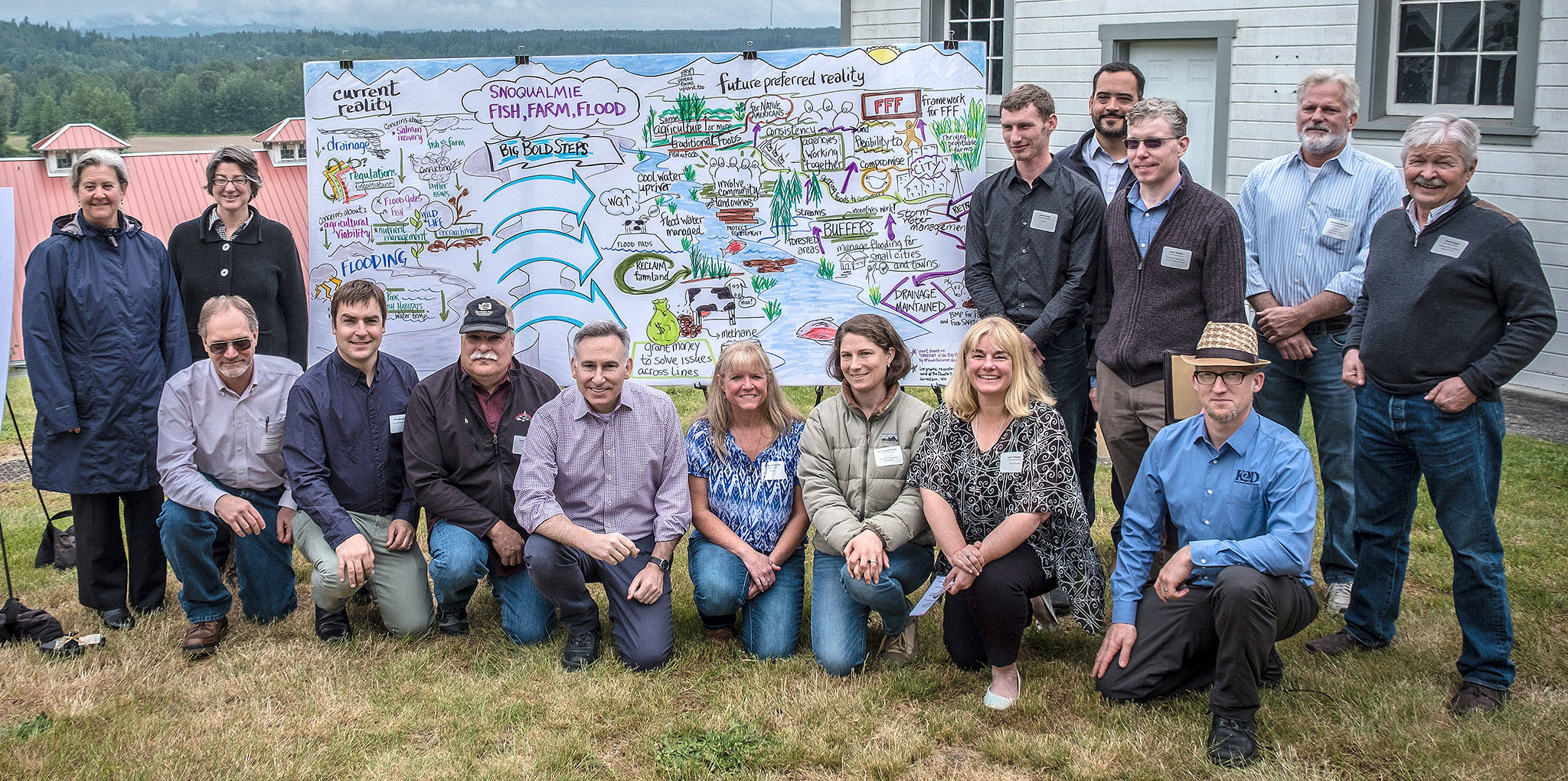King County Executive Dow Constantine on Monday thanked Snoqualmie Valley farmers, residents and fish and wildlife advocates for achieving a landmark agreement balancing reduced flood risk to people and property, strengthening salmon populations, and growing a prosperous farming community.
At the historic Carnation Farms and with expansive views of the lush Snoqualmie Valley for a backdrop, Constantine met with an advisory committee that has spent more than three years forging the first major agreement in the county to strike a balance between farming interests and salmon recovery.
At the core of the Fish, Farm, Flood agreement is a series of immediate, mid-term, and long-term recommendations for action to address overall Snoqualmie Watershed goals.
“I gave the Fish, Farm and Flood Advisory Committee a difficult assignment: Overcome competing interests to achieve shared goals – and they delivered,” said Constantine. “They produced recommendations that will help us restore salmon habitat, strengthen our agricultural economy, and reduce flood risks.”
The 14-member advisory committee unanimously endorsed a package of 34 recommendations to address specific watershed goals and actions that will improve the watershed for people, businesses, and fish and wildlife.
Among the top priority actions are achieving less costly and more predictable drainage regulations for farmers, and increasing the pace of salmon recovery efforts in the Snoqualmie Valley. This work includes reexamining drainage and buffer regulations, and developing an agricultural land strategy for the valley.
The collaboration was the result of the King County Council adding a directive in the 2012 King County Comprehensive Plan update to create a watershed planning process for the Snoqualmie Watershed – primarily the lower 30 miles of the valley from Snoqualmie Falls north to the Snohomish County line. This area includes about 14,500 acres of the Snoqualmie Agricultural Production District.
The Advisory Committee has representatives from farming and agriculture, conservation, flooding, and salmon recovery interests, as well as tribal, state and local jurisdictions.
While the Committee’s report is the culmination of years of hard work, there is more to be done. Among the committee’s recommendations is creation of three task force groups to carry out follow-up work over the next three years.
Find the full list of recommendations at http://your.kingcounty.gov/dnrp/library/water-and-land/watersheds/snoqualmie-skykomish/fish-farms-flooding/king-county-fish-farm-flood-final-agreement-pkg-june-2017.pdf.


